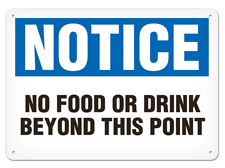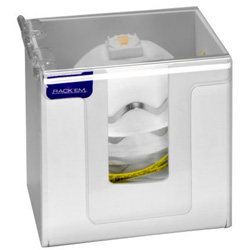



Find all of your laboratory and workplace safety supplies at Safety Emporium!
 Hepatic |
 Glossary Index |
 HMIRS |
| MSDS Topics |
Free Sites | FAQ's | Regulations | Glossary | Software | Suppliers |
| Books | Forum | Poll | Fun stuff | Quiz | Store | |
| Understand your MSDS with the MS-Demystifier | Search ALL our MSDS info | |||||

Get your GHS-compliant labels and signs from Safety Emporium.
A highly toxic material was defined in Appendix A of the now-obsolete 1994 version of the Hazard Communication Standard as a chemical that fell in any of these three categories:
When OSHA deprecated HCS 1994 and updated it to the current version (HCS 2012) to align the US with the Globally Harmonized System of Classification and Labeling of Chemicals (GHS), the term was omitted. OSHA completely revised Appendix A to reflect a hazard classification approach rather than the less rigorous hazard determination used in the 1994 version.
Other agencies, organizations, and jurisdictions still use the 3-point definition above. For example, see the 2015 Virginia Statewide Fire Prevention Code.
The current hazard classification approach assigns chemicals to specific Classes of hazards, for example carcinogenicity or flammable solid. Within the Hazard Classes the degree of hazard is indicated with a Category. The Category is usually a number (1-4) or letter (A, B, C) although there are few that are indicated with words. 1 indicates a greater hazard category than 2, and A is a greater hazard than B. Some of the numeric categories have subcategories, so Class 2A is more hazardous than Class 2B, for example. For gases and some reproductive toxins, the categories are listed by names rather than numbers or letters.
Thus, there are several different types of toxicity in OSHA's implementation of the GHS, HCS 2012, for example, reproductive toxicity, acute toxicity, specific organ toxicities etc.
The highest toxicity within any specific Hazard Class will be Category 1 or Category 1A. While not officially called "highly toxic" in the current system, one can think of these in that fashion - e.g., the highest toxic risk in each class.
Under the older HCS 1994 system, "highly toxic" was the greatest level of toxicity as OSHA did not have an "extremely toxic" ranking. We can't find an authoritative definition for the latter term, but the general consensus is that "extremely toxic" refers to any substance with an oral LD50 < 5 mg/kg.
The OSHA standard, "Process Safety Management of Highly Hazardous Chemicals", 29 CFR 1910.119, applies to workplaces where hazardous materials are used. 29 CFR 1910.119 states Highly hazardous chemical means a substance possessing toxic, reactive, flammable, or explosive properties and specified by paragraph (a)(1) of this section.". That paragraph refers to Appendix A of 1910.119 which "contains a listing of toxic and reactive highly hazardous chemicals which present a potential for a catastrophic event at or above the threshold quantity." See Further Reading below for resources on this standard.

Ensure safe laboratories with laboratory signs and labels from Safety Emporium.
As discussed above, the term "highly toxic" is not a generally used concept on Safety Data Sheets since OSHA fully adopted the GHS system in 2015. Nonetheless, the concept is vitally important. Part of your experiment or occupational procedure planning must include knowing the physical properties of the material as well as symptoms of exposure and first aid procedures. Safety Data Sheets are an integral part of this process.
Accidental release or exposure to a highly toxic chemical can cause serious injury or death. If you can not avoid using highly toxic materials in the first place, then proper personal protective equipment (gloves, safety goggles, respirators etc.) and engineering controls such as fume hoods are an absolute necessity. Never work with highly toxic materials while alone. If one exists, have the proper antidote on hand. NEVER eat or drink in where toxic chemicals are being used and always be sure to wash your hands (and clothes, if necessary) after handling such materials.
It is critical that you develop and enforce written standard operating procedures (SOP's) for working with EACH highly toxic material. In 1997, a professor at Dartmouth University, an experienced researcher and expert on the toxicology of heavy metal poisoning, died after spilling just a few drops of highly toxic dimethylmercury on her latex gloves (the wrong choice of gloves, obviously). In 2009, a worker in Canada died when he performed a chemical reaction in a fume hood that had been deactivated for maintenance; following an SOP to test all hoods before use would have saved his life.

Make your PPE readily available with safety dispensers from Safety Emporium.
See also: LC50, LD50, poison, toxic.
Additional definitions for metric system from Google and OneLook.
Entry last updated: Saturday, December 31, 2022. This page is copyright 2000-2025 by ILPI. Unauthorized duplication or posting on other web sites is expressly prohibited. Send suggestions, comments, and new entry desires (include the URL if applicable) to us by email.
Disclaimer: The information contained herein is believed to be true and accurate, however ILPI makes no guarantees concerning the veracity of any statement. Use of any information on this page is at the reader's own risk. ILPI strongly encourages the reader to consult the appropriate local, state and federal agencies concerning the matters discussed herein.